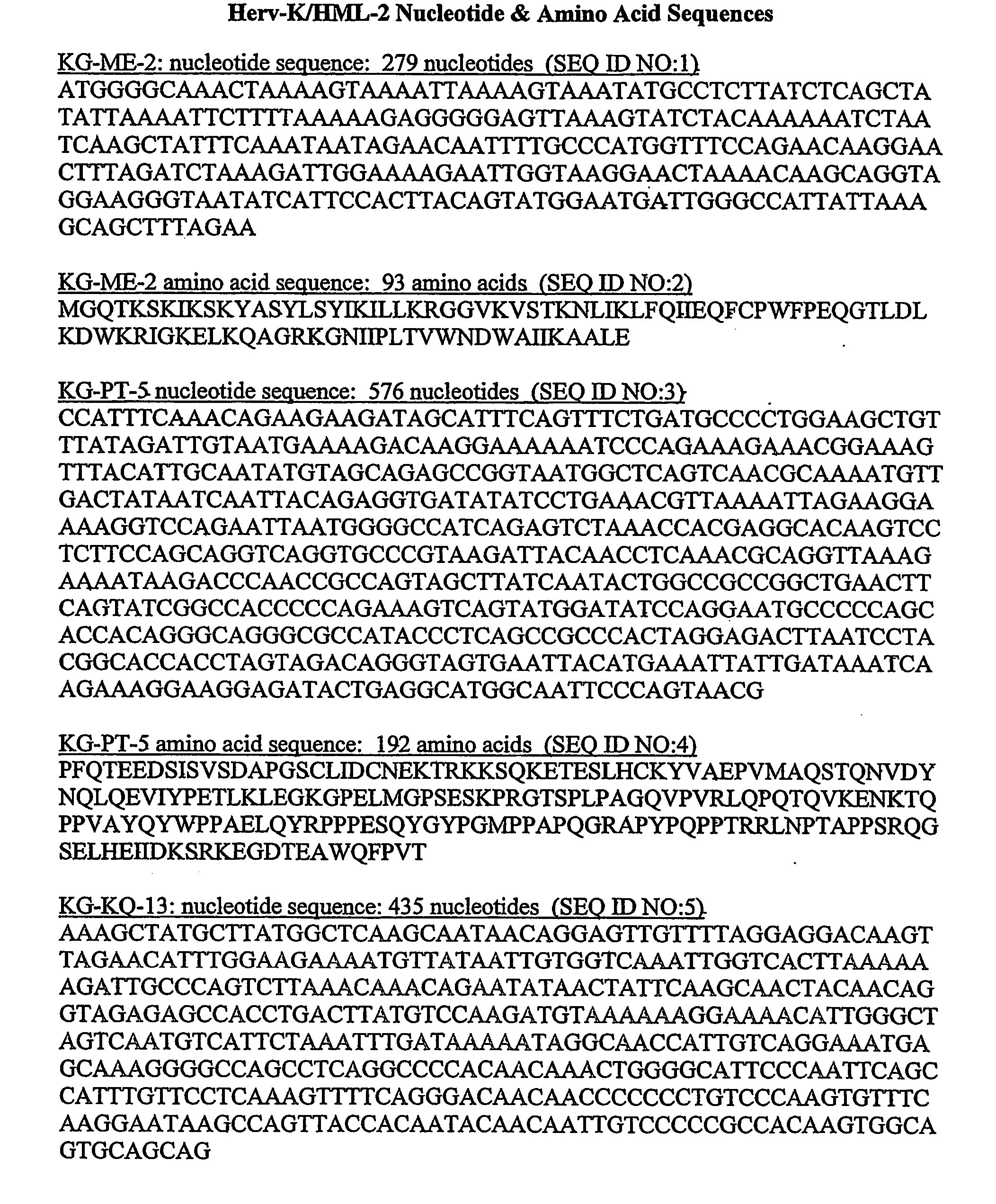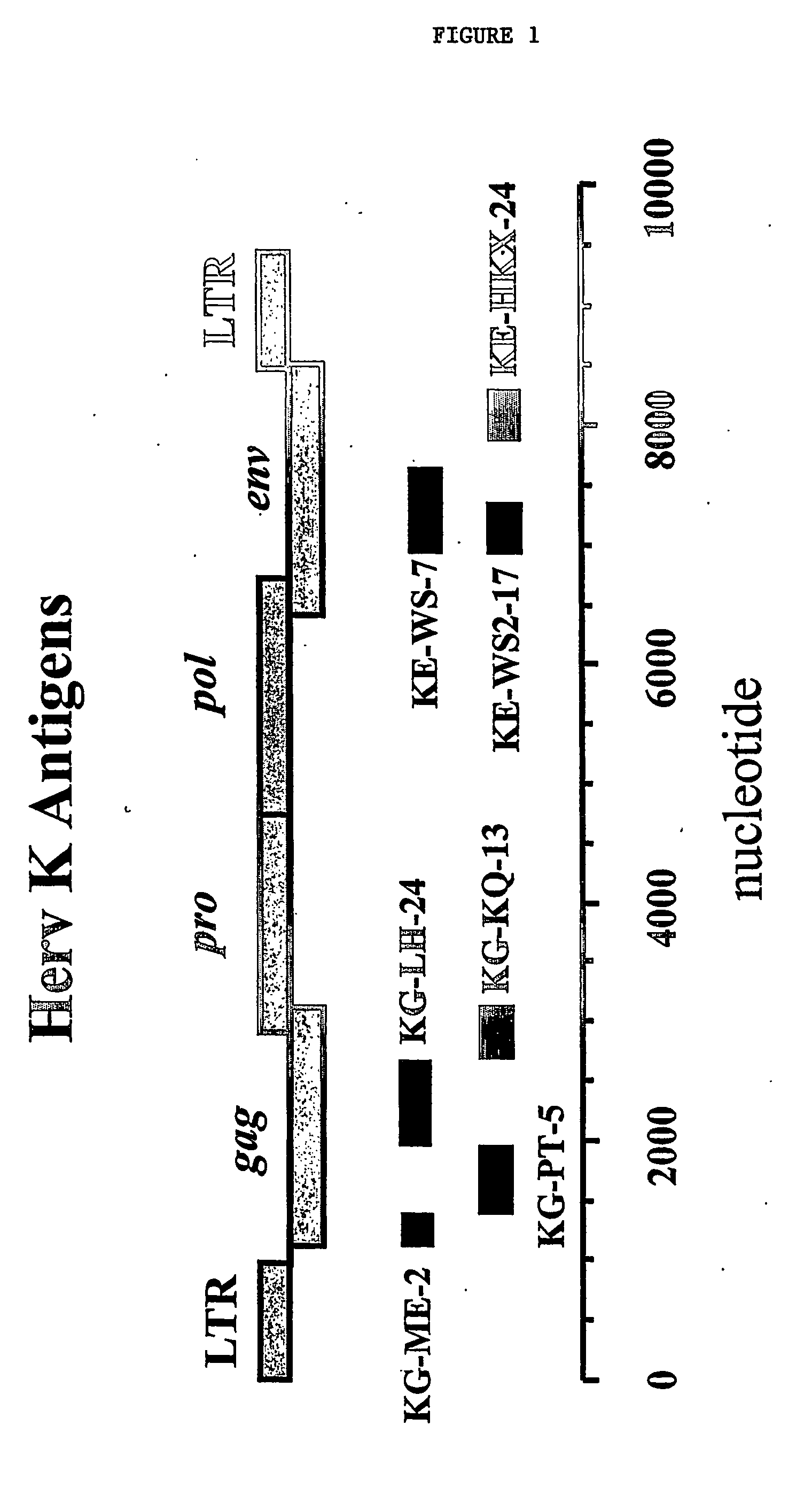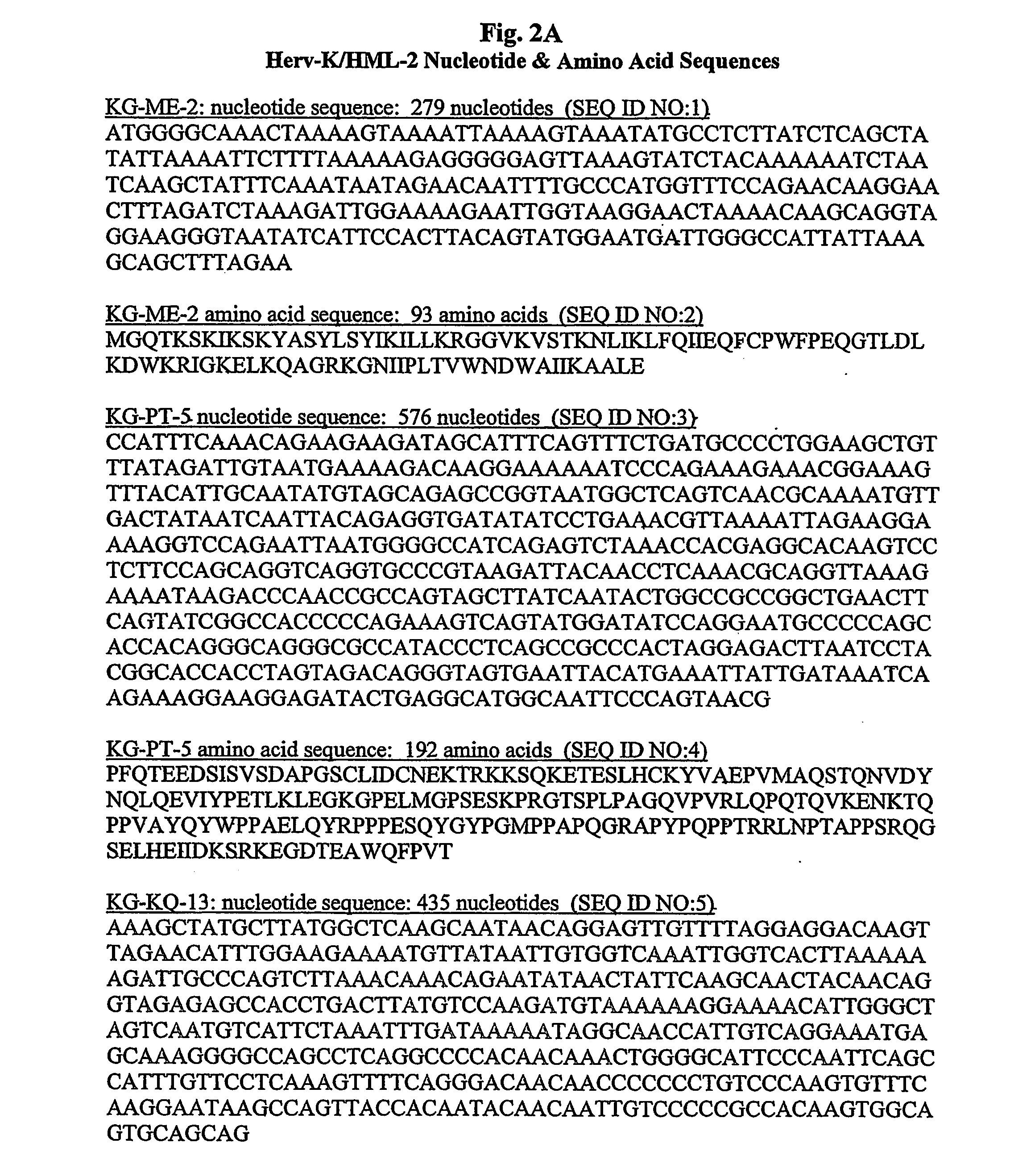Monitoring and treatment of amyotrophic lateral sclerosis
a technology amyotrophic lateral sclerosis, which is applied in the field of amyotrophic lateral sclerosis (als) disease and endogenous retroviruses, can solve the problems of the affected individual's death, and achieve the effect of reducing the expression of herv-k/hml-2
- Summary
- Abstract
- Description
- Claims
- Application Information
AI Technical Summary
Benefits of technology
Problems solved by technology
Method used
Image
Examples
example 1
Assays for Detection of an Immune Response to Herv / HML Antigens
[0212] In order to test for an immune response to Herv / HML antigens in ALS patients, selected portions of various Herv / HML genes were amplified using PCR, the amplification products cloned into expression plasmids and recombinant Herv / HML polypeptides expressed in bacteria. The resultant recombinant polypeptides were then subjected to gel electrophoresis and western blot analysis using standard techniques as described herein. Primary antibody used as a probe for some of the western blots was sera from individuals with ALS or sera from non-ALS individuals (e.g., blood donors).
[0213] To generate the specific Herv / HML polynucleotide sequences, primers were constructed based on particular Herv / HML gag gene and env gene sequences and used to amplify human genomic DNA (HGD). For example, selected portions of the Herv-K / HML-2 gag and env genes were amplified using the sequence of the endogenous retrovirus HervK-109 / Herv-K10 a...
example 2
Detection of an Immunologic Response to Herv-K / HML-2 Antigens
[0218] To test for expression of Herv / HML in ALS patients, sera from individuals with ALS was screened for the presence of anti-Herv / HML antigen antibodies. For this analysis, selected portions of the Herv / HML genes of interest were amplified, cloned into a pThioHisA vector, expressed in bacteria as thioredoxin-fusion or HA epitope-fusion proteins and subjected to western blot analysis as described in Example 1.
[0219] Accordingly, selected portions of the Herv-K / HML-2 gag and env genes were amplified by PCR (FIG. 1) using sequences of HervK-109 / Herv-K10 as the starting point for the design of oligonucleotide primers as described in Example 1 and Table 1. The amplified products were then treated as described in Example 1. Confirmation of the desired cloned fragment by DNA sequencing indicated that, overall, the clones were >95% homologous to the appropriate region of Herv-K-109 (GenBank accession number AF164615) or Herv-...
example 3
Expanded Study for Immunologic Response to Herv-K / HML-2 GAG Antigen
[0230] Plasma from 37 patients with sporadic ALS was collected over a period of 18 months. The patients were diagnosed by El Escorial criteria (Brooks et al. (1994) J. Neurol. Sci. 124(suppl):96-107) at the Forbes Norris MDA / ALS Research Center (San Francisco, Calif.) and had blood drawn in accordance with the California Pacific Medical Center and University of California San Francisco (UCSF) committees on human research guidelines, coordinated by the UCSF AIDS and Cancer Specimen Resource program. Clinical status of patients was evaluated using the Revised-ALS Functional Rating Scale (ALSFRS-R), scored 0-48 (The ALS CNTF treatment study (ACTS) phase I-II Study Group, The Amyotrophic Lateral Sclerosis Functional Rating Scale (1996) Arch Neurol. 53:141-147). Patients were evaluated within a month of donating samples. Control sera included 19 plasma samples from patients with Alzheimer's disease (AD). Healthy controls...
PUM
 Login to View More
Login to View More Abstract
Description
Claims
Application Information
 Login to View More
Login to View More - R&D
- Intellectual Property
- Life Sciences
- Materials
- Tech Scout
- Unparalleled Data Quality
- Higher Quality Content
- 60% Fewer Hallucinations
Browse by: Latest US Patents, China's latest patents, Technical Efficacy Thesaurus, Application Domain, Technology Topic, Popular Technical Reports.
© 2025 PatSnap. All rights reserved.Legal|Privacy policy|Modern Slavery Act Transparency Statement|Sitemap|About US| Contact US: help@patsnap.com



